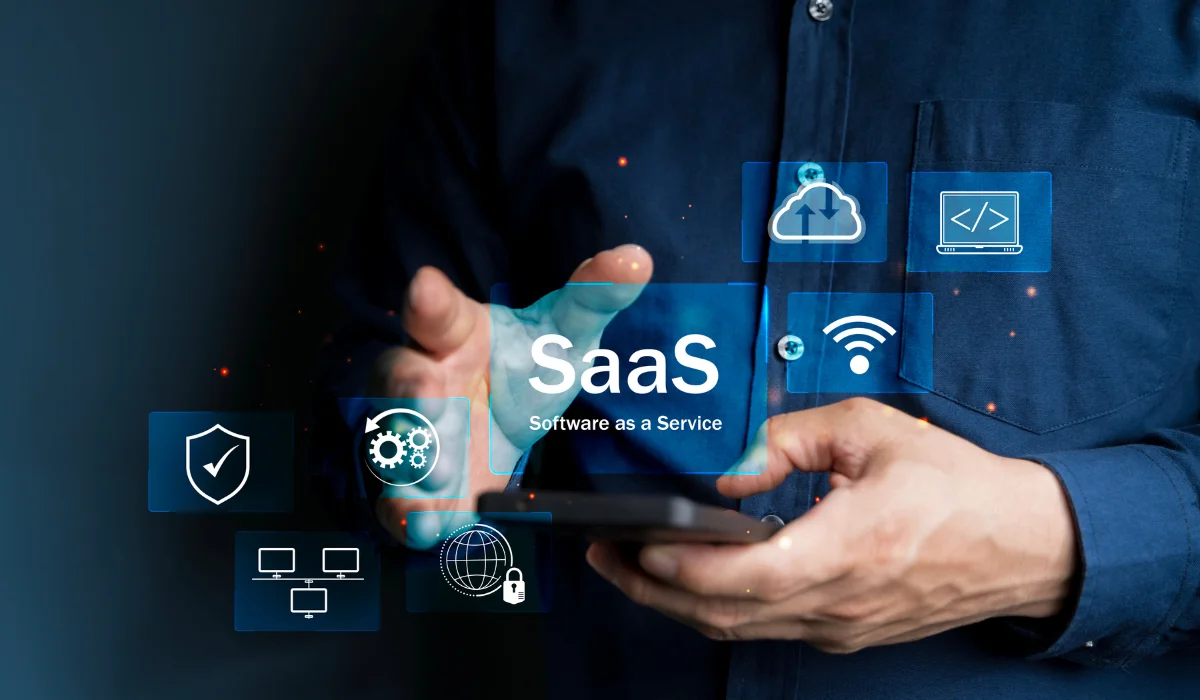An MVP is proof of concept, not proof of scalability. The real work begins when you take those scrappy early wins and rebuild the product for thousands of users. That means rethinking your architecture, tightening your onboarding, and making sure your business model can stretch without snapping.
But this journey of transforming a basic MVP to a successful, scalable SaaS product is full of difficulties.
This guide is for all the startup founders facing that transition. It walks you through practical steps and clear growth strategies for a SaaS product.
What an MVP Really Means for SaaS Startups
In the SaaS world, your MVP shouldn’t just be the simplest product; it must be the simplest answer that offers real, proven value and helps you find Product-Market Fit (PMF) (when your product meets a strong market need).
The goal of an MVP is learning what works. It’s not about what features you can cut, but what guess you must test. Does your single-core feature solve a critical problem better than what’s already out there? Your MVP should be very focused, designed to prove one or two key ideas, allowing you to gather solid data on how users behave and what they’re willing to pay before spending too much money.
Also Read: How to Build an AI MVP (Without Burning Your Budget)
Why Scale MVP to SaaS Product
Launching an MVP is a huge milestone. It proves your idea works and that customers care. But MVPs are built for speed, not scale. What got you your first 100 users won’t get you the next 10,000. Scaling matters because without it, growth can break your product, overwhelm your team, and frustrate your customers.
How to Know Your MVP is Ready to Scale
Scaling an MVP too early wastes money. Scaling too late loses customers. So how do you know it’s time? Look for these signals:

- Exceptional Retention (Users stay): Are users sticking around? If your core users keep using the product month after month, it’s sticky.
- Viral Feedback Loop (Users talk about it): Customers are actively telling others about the product (high Net Promoter Score, or NPS, and word-of-mouth growth).
- Clear LTV/CAC Ratio (Users are worth more than they cost): Your Customer Lifetime Value (LTV, the total money you get from a customer) must be much higher than your Customer Acquisition Cost (CAC, the cost to get a customer). A 3:1 ratio is a good sign.
- Qualitative Validation (Proof from customer feelings): You know you’ve found PMF when you can’t keep up with demand, and your customers would be “very disappointed” if your product disappeared tomorrow.
If you’re firefighting outages daily, or if demand is outpacing your system, that’s a clear sign your MVP needs to evolve into a full SaaS product.
Also Read: MVP vs Prototype vs PoC: Are They Same?
How to Scale Your MVP?
Step 1: Laying the Technical Foundation for Scale

Once your SaaS MVP development is complete (you’ve found PMF), the next step is to upgrade your technology to handle the incoming traffic. Fixing old code that can’t handle growth is expensive and risky, so here are the required technical steps:
- Building in the Cloud: Build your app using a major cloud provider (AWS, GCP, Azure) right away. Use managed services (such as automated functions and databases) to let the cloud provider handle day-to-day operations.
- Independent Services: Move away from a monolithic (one big block of code) MVP. Design using microservices (small, independent services) or at least a modular architecture. This lets you grow high-demand parts of your app separately (e.g., your API layer can grow faster than your reporting system).
- Database Strategy: Choose the right database for the job. This often means moving complex transactions to a relational database (like PostgreSQL) and high-volume, changing data to a NoSQL solution (like MongoDB or DynamoDB) or a fast, in-memory cache (like Redis).
- Automation and CI/CD: Set up Continuous Integration/Continuous Deployment (CI/CD). Use tools like GitHub Actions or GitLab CI to automate testing, product deployment, and the setup of required server resources (Infrastructure as Code). This ensures fast, error-free growth.
Step 2: Designing Your Business Model for Scale
Your business model must be ready to support the technical growth you just planned. Your strategy must match your technical choices.
- Tiered Pricing for Customer Groups: Your pricing must grow with you. Use plans based on usage or different tiers (Basic, Pro, Enterprise) that match what the customer gets. This allows you to earn revenue from both small and large customers without having to rebuild your core product for each group.
- Customer Success as a Growth Engine: Change your focus from just answering questions to a proactive (forward-looking) Customer Success Management (CSM). Use dedicated teams and automated tools to help users adopt the product, reduce churn (users leaving), and find chances to sell more (upgrades).
- Operational Efficiency: Standardize how your internal team works using tools for customer tracking (CRM), billing, and project management. As your team grows, disorder will slow you down unless your internal work processes can also grow easily.
Growth Strategies to Support SaaS Scalability
Scaling isn’t just technical, it’s business, too.
- Pricing models: Move from flat fees to tiered or usage-based pricing that grows with customers.
- Customer onboarding: Create simple, repeatable onboarding flows that don’t require manual support.
- Retention strategies: Build customer success teams and feedback loops to reduce churn.
- Funding: Use MVP traction to raise capital for scaling infrastructure and teams.
Turn a Scalable SaaS Product into a Market Leader
With your technical and business foundations set, you move into the dedicated growth phase. This requires following the plan strictly:
- Land and Expand: Focus first on getting a large number of users (the “land” phase). Then, focus on maximizing revenue per user (ARPU) through premium features, usage growth, or add-ons (the “expand” phase).
- Data-Driven Iteration: Use analytics (Mixpanel, Amplitude) to carefully check how users activate, stick around, and convert across all customer groups. This data, not just feelings, must guide what features you build next.
- Content and SEO Dominance: Build thought leadership through high-quality content that fixes your target customers’ pain points. Your blog, guides, and webinars should position you as the definitive solution in your niche, creating a natural way to get customers that scales efficiently.
How Softude Helps Startups in Rapid SaaS MVP Development?

Our team conducts comprehensive system audits to uncover hidden performance bottlenecks in MVPs and designs future‑proof architectures that can handle tomorrow’s demand.
What sets us apart is that we go beyond coding. We mentor founders and teams on how to grow sustainably, introducing advanced practices such as:
- Rapid MVP development: Launch quickly with a lean, usable product that validates your idea in the market.
- Scalable engineering: Implement cloud‑native architecture, automation, and performance optimization to support exponential user growth.
- UX and customer focus: Design onboarding and retention flows that scale seamlessly and keep customers engaged.
- AI and advanced tech: Integrate modern tools and intelligent systems to stay ahead of competitors.
We have partnered with startups that began with a simple idea, built their MVP, and scaled into SaaS products serving thousands of paying customers.
Conclusion
Scaling a SaaS product isn’t a single action; it’s a culture of continuous improvement. It’s driven by data, supported by resilient technology, and paid for by a smart business model. The moment you find Product-Market Fit, you must commit to handling growth; it’s the only way to protect your success and build true value in your company.
Don’t let your successful SaaS MVP development fall apart under the weight of its own popularity. Start planning your scale strategy today.






